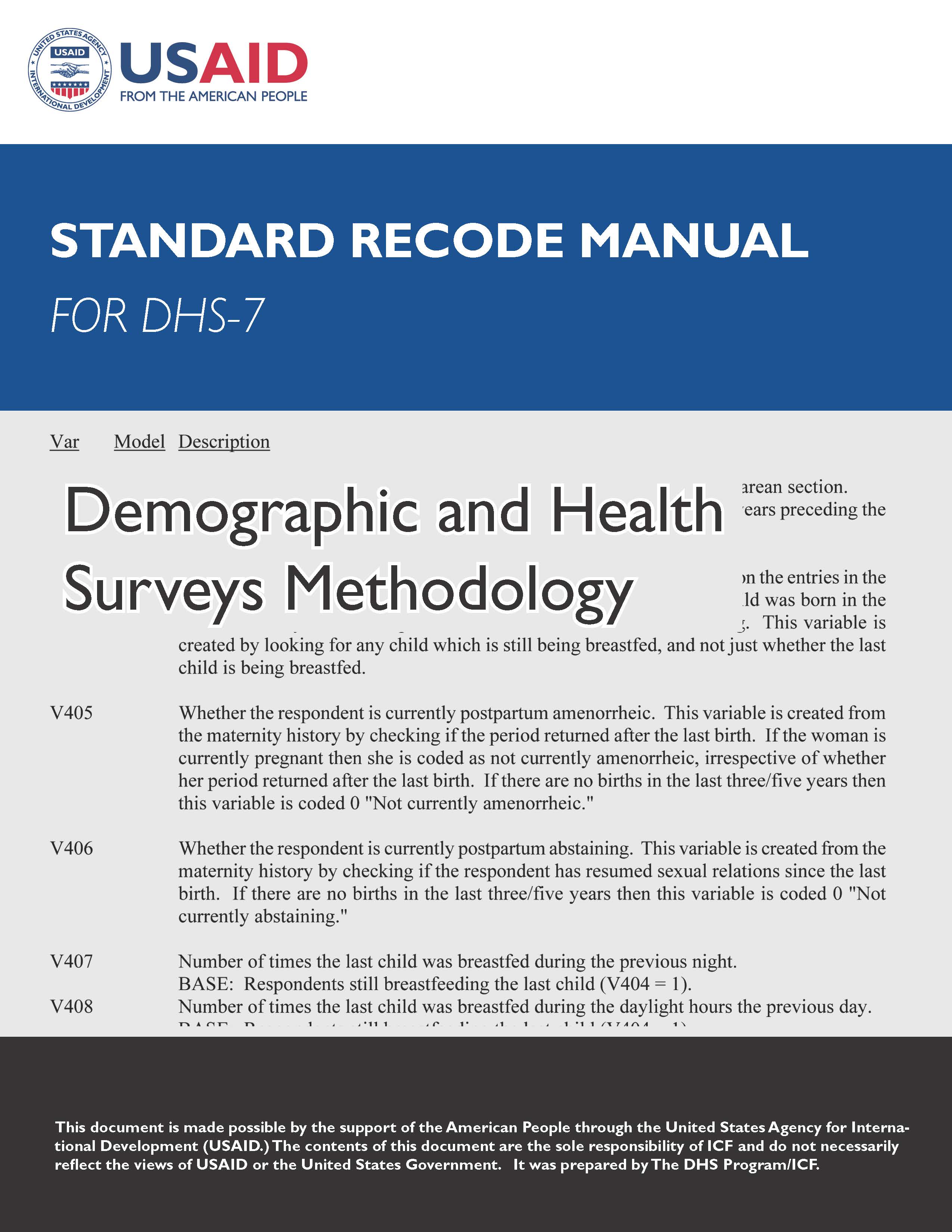Updated Recode Manual for DHS-VII


What is the DHS-VII Recode Manual?
The basic approach of The DHS Program is to collect data that are comparable across countries. This is achieved through the use of model questionnaires and the subsequent processing of the raw data into standardized data formats known as recode files. The DHS-VII Recode Manual is an introduction to the DHS standard recode files and serves as a reference document for those analyzing DHS data.
Who is the manual for?
Data users who are analyzing DHS datasets in statistical software receive the DHS recode data files for each survey along with the survey specific recode documentation. We strongly recommend that users download this documentation as well as the questionnaires used in the surveys they analyze. The questionnaire for a survey can be located in the appendix of the final report.
What is new in this version of the manual?
This updated manual describes the characteristics of the recode files defined for the seventh round of the DHS surveys (DHS-VII). The manual highlights the 234 new variables added during DHS-VII. In addition to an explanation of new variables, the manual now also contains:
- A description of the DHS Recode Data Files distributed and file naming convention used.
- An explanation of the Century Day Code (CDC). Beginning with the DHS-VII questionnaire (surveys with fieldwork in about 2015 and later), the woman’s questionnaire collects the day of birth for all children listed in the birth history in addition to their month and year of birth to calculate the age of children more accurately. The use of CDC affect virtually all tables related to children, particularly to children under the age of five.
- A list of the locations of DHS-VII core questionnaire variables in the DHS-VII standard recode variables.
Where can you find the guide?
Download the DHS-VII DHS Recode Manual Here
© ICF

